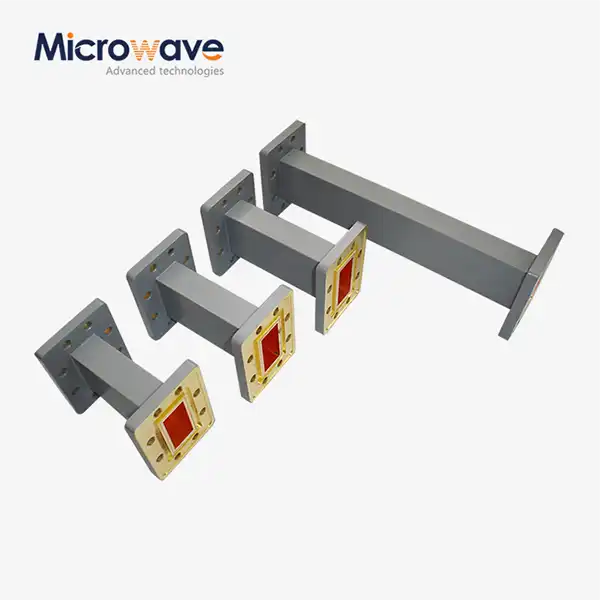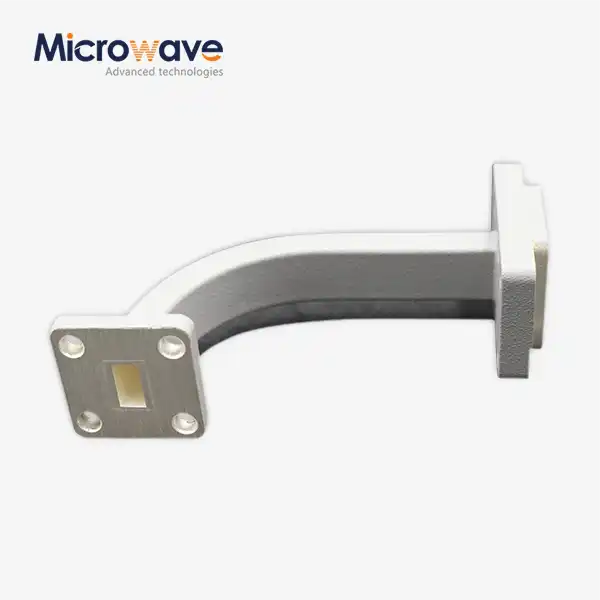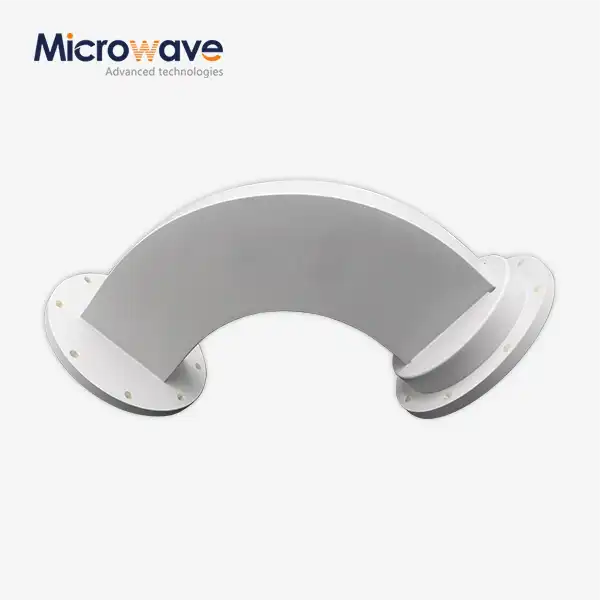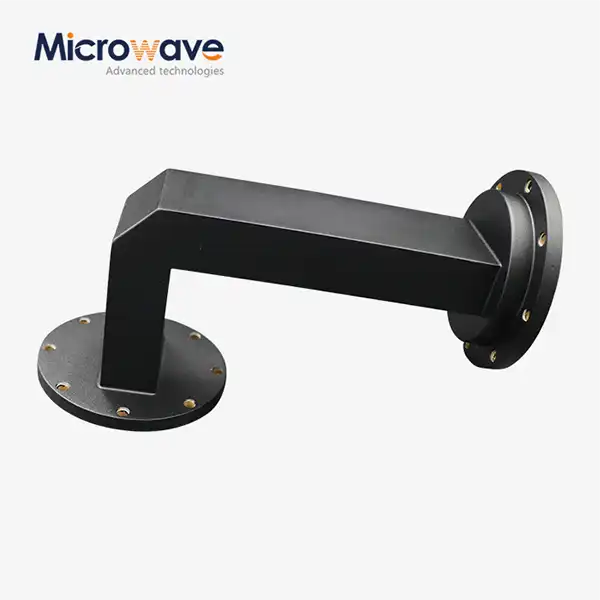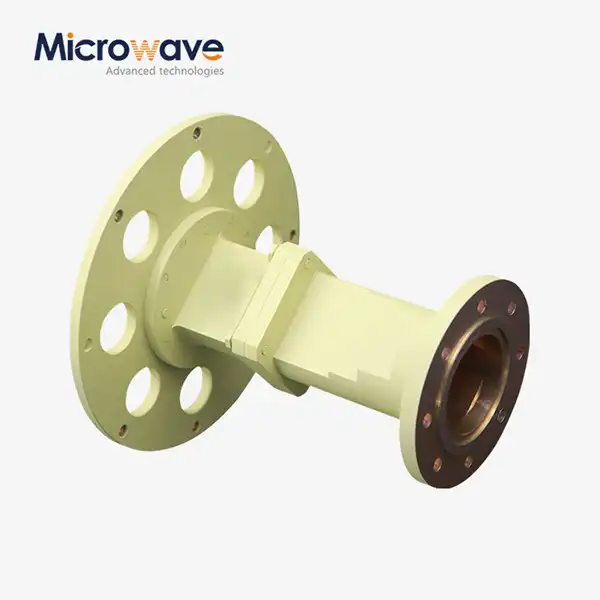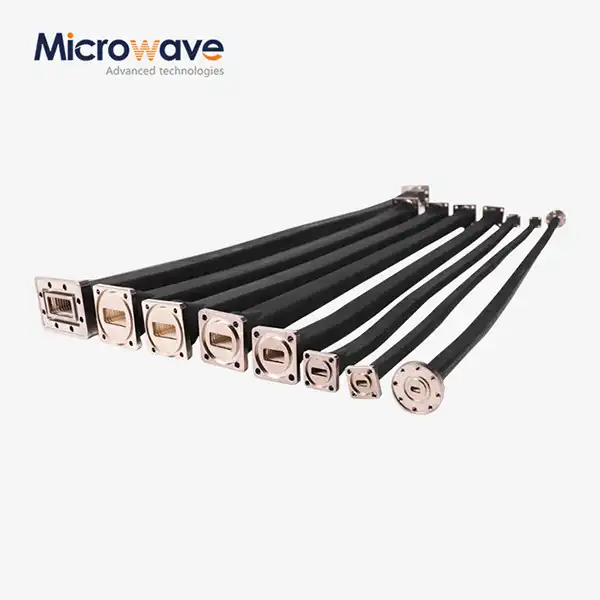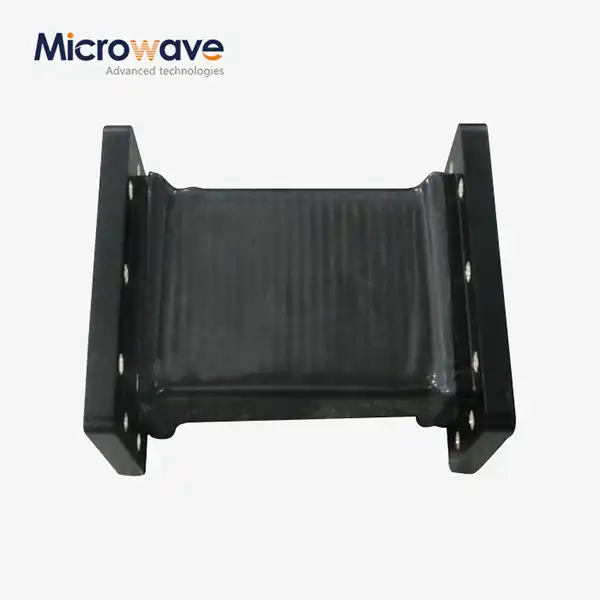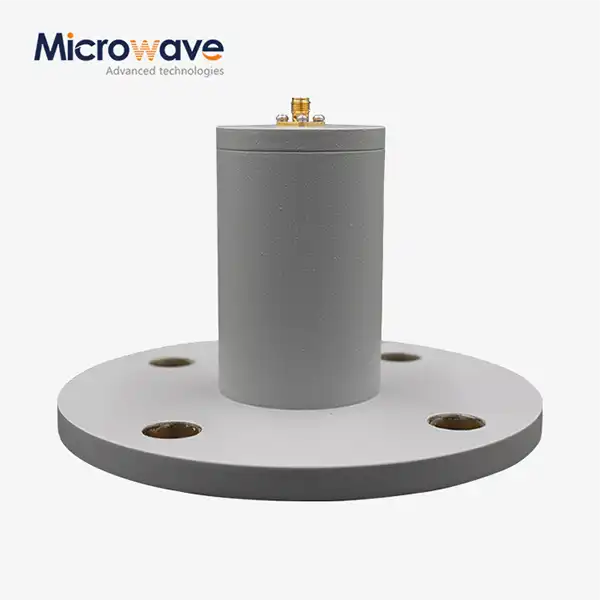What is the fundamental function of a waveguide adapter?
The fundamental function of a waveguide adapter is to provide seamless signal transition between different transmission line types while maintaining signal integrity and minimizing losses. In modern microwave and RF systems, a wg adapter serves as the critical interface component that enables efficient signal transfer between waveguides and coaxial transmission lines, ensuring optimal system performance across diverse frequency ranges. These sophisticated components transform electromagnetic wave propagation modes while preserving signal characteristics, making them indispensable in applications ranging from satellite communications to radar systems. The wg adapter essentially bridges the gap between different transmission mediums, facilitating reliable signal flow in complex microwave networks.
Core Signal Conversion Mechanisms in Waveguide Adapters
Electromagnetic Mode Transformation Principles
The electromagnetic mode transformation within a wg adapter represents one of the most sophisticated aspects of microwave engineering. When signals propagate through waveguides, they typically exist in transverse electric (TE) or transverse magnetic (TM) modes, each characterized by specific field distributions and propagation characteristics. The wg adapter must efficiently convert these waveguide modes into the transverse electromagnetic (TEM) mode that propagates in coaxial lines. This conversion process involves carefully designed transition structures that gradually transform the field configuration while maintaining impedance matching throughout the transition region. Advanced Microwave Technologies Co., Ltd. has mastered this conversion process through precise engineering of their wg adapter designs. The company's adapters utilize sophisticated geometric transitions that ensure smooth field transformation without generating unwanted higher-order modes that could degrade signal quality. Their ultra-wide frequency range capability, spanning from low frequencies to millimeter waves, demonstrates the effectiveness of their mode conversion techniques across diverse operating conditions. The insertion loss performance, often reaching as low as 0.1dB or even lower, reflects the efficiency of the electromagnetic mode transformation process.
Impedance Matching Optimization Strategies
Impedance matching represents the cornerstone of effective wg adapter design, ensuring maximum power transfer and minimal signal reflection. The characteristic impedance of waveguides differs significantly from that of coaxial transmission lines, creating potential mismatch conditions that could severely impact system performance. A well-designed wg adapter incorporates multiple impedance matching techniques, including tapered transitions, quarter-wave transformers, and multi-section matching networks. These techniques work together to provide broadband impedance matching across the entire operating frequency range. The voltage standing wave ratio (VSWR) performance of Advanced Microwave's wg adapter, typically ranging from 1.1 to 1.5, demonstrates superior impedance matching capabilities. This exceptional VSWR performance ensures minimal signal reflection, maximizing power transfer efficiency and maintaining signal integrity throughout the transmission path. The company's engineering team employs advanced electromagnetic simulation tools to optimize impedance matching performance, considering factors such as connector dimensions, material properties, and manufacturing tolerances. Their compact design philosophy ensures that impedance matching is achieved without compromising space efficiency or installation convenience.
Signal Integrity Preservation Techniques
Signal integrity preservation in wg adapter applications requires careful attention to multiple factors that could potentially degrade signal quality. Phase coherence, amplitude uniformity, and spurious signal suppression all play crucial roles in maintaining signal fidelity throughout the transmission path. The wg adapter must preserve these signal characteristics while providing the necessary mode conversion and impedance transformation functions. Advanced design techniques, including optimized conductor geometries, high-quality dielectric materials, and precision manufacturing processes, contribute to superior signal integrity performance. Advanced Microwave's wg adapter incorporates high-quality materials such as aluminum, brass, and stainless steel, each selected for specific performance characteristics. The silver plating inside finish provides excellent conductivity while preventing oxidation, ensuring long-term signal integrity preservation. The anticorrosion grey paint outside finish protects against environmental factors that could potentially impact performance. Their rigorous testing procedures verify that each wg adapter maintains signal integrity across its specified operating range, ensuring reliable performance in demanding applications such as satellite communications, radar systems, and wireless infrastructure.
Performance Optimization and Technical Specifications
Frequency Response Characteristics and Bandwidth Considerations
The frequency response characteristics of a wg adapter directly impact its suitability for specific applications, with bandwidth considerations playing a crucial role in system design decisions. Modern microwave systems often require operation across multiple frequency bands, necessitating wg adapter designs that provide consistent performance across wide frequency ranges. The frequency-dependent behavior of electromagnetic wave propagation, including dispersion effects and modal characteristics, must be carefully considered in the adapter design process. Broadband performance requires sophisticated design techniques that account for frequency-dependent impedance variations and modal coupling effects. Advanced Microwave's wg adapter demonstrates exceptional frequency response characteristics with ultra-wide frequency coverage from low frequencies to millimeter waves. This capability enables operation across diverse frequency bands, including S-band (2-4GHz) and Ka-band (26.5-40GHz) applications. The Model No: ADM-100WCAST1 specifically covers the 10-11GHz frequency range with impressive specifications, including a maximum VSWR of 1.15 and maximum insertion loss of 0.15dB. These performance characteristics reflect the company's expertise in managing frequency-dependent effects while maintaining consistent performance across the entire operating bandwidth.
Power Handling Capabilities and Thermal Management
Power handling capability represents a critical specification for wg adapter applications, particularly in high-power systems such as radar transmitters and communication base stations. The ability to handle high power levels without degradation requires careful consideration of thermal effects, peak power limitations, and average power constraints. Thermal management becomes increasingly important as power levels increase, with conductor losses generating heat that must be effectively dissipated to prevent performance degradation or component failure. Advanced cooling techniques, including heat sinking and thermal interface materials, may be necessary for high-power applications. The high-power capacity of Advanced Microwave's wg adapter enables operation in demanding applications where power levels range from watts to kilowatts or more. This capability results from intelligent material selection and structural design optimization that maximizes power handling while maintaining compact form factors. The copper construction of their ADM-100WCAST1 model provides excellent thermal conductivity, facilitating effective heat dissipation during high-power operation. Their smart material and structure design approach ensures that thermal stress is minimized while maximizing power handling capability across the entire operating frequency range.
Mechanical Design and Environmental Reliability
Mechanical design considerations for wg adapter applications encompass structural integrity, environmental resistance, and installation flexibility. The mechanical interface between waveguide and coaxial connections must provide reliable electrical contact while maintaining structural stability under various environmental conditions. Factors such as temperature cycling, vibration, humidity, and corrosive atmospheres can all impact long-term reliability. Robust mechanical design incorporates appropriate materials selection, protective finishes, and structural reinforcement to ensure reliable performance throughout the component's operational lifetime. Advanced Microwave's approach to mechanical design emphasizes both performance and reliability through careful material selection and structural optimization. Their wg adapter designs incorporate standard interfaces including N-type, SMA-type, and 2.92mm-type connectors, enabling quick connections while ensuring mechanical compatibility with existing systems. The availability of structural types including end-launch and right-angle configurations provides installation flexibility for space-constrained applications. Their rigorous testing procedures ensure high reliability and durability during long-term use, with the company's ISO certifications reflecting their commitment to quality and environmental responsibility.

Applications and System Integration Solutions
Radar System Implementation and Performance Enhancement
Radar system implementation represents one of the most demanding applications for wg adapter technology, requiring exceptional performance across multiple parameters including frequency stability, phase coherence, and power handling capability. Modern radar systems operate across diverse frequency bands and power levels, necessitating wg adapter solutions that can accommodate these varying requirements while maintaining consistent performance. The critical role of signal integrity in radar applications means that any degradation introduced by the wg adapter directly impacts system performance, making high-quality adapter design essential for optimal radar operation. In radar systems, the wg adapter plays a crucial role in connecting different components, enabling efficient signal transmission between transmitters, receivers, and antennas. Advanced Microwave's wg adapter technology ensures accurate target detection and tracking through superior signal transfer characteristics. Military surveillance radars and weather-monitoring radars particularly benefit from the low-loss and high-frequency-compatible features of their wg adapter designs. The company's 24m Microwave Darkroom facility enables comprehensive testing of antenna systems, ensuring that wg adapter performance meets the stringent requirements of modern radar applications. Their test frequency range spanning 0.5-110GHz accommodates the diverse frequency requirements of contemporary radar systems.
Satellite Communication Infrastructure and Signal Distribution
Satellite communication infrastructure demands exceptional reliability and performance from all system components, with wg adapter technology playing a critical role in signal distribution and interface applications. The challenging environment of satellite communications, including space-based applications and ground station implementations, requires components that can operate reliably under extreme conditions while maintaining signal integrity over extended periods. Frequency coordination requirements and regulatory compliance considerations add additional complexity to satellite communication wg adapter applications, necessitating designs that meet stringent performance specifications across multiple frequency bands. Satellite communication requires reliable signal transfer over long distances, with the wg adapter serving as a crucial interface component between various satellite-borne and ground-based communication equipment. Advanced Microwave's wide-frequency-range coverage ensures seamless communication across different satellite bands, facilitating data transmission, voice communication, and video streaming in satellite-based communication networks. Their wg adapter technology supports the high-performance requirements of satellite ground stations, ensuring efficient signal transfer for HD video, data, and voice communications. The company's expertise in feed network customization enables optimized solutions for specific satellite communication requirements, ensuring maximum system performance and reliability.
Wireless Infrastructure and 5G Network Deployment
Wireless infrastructure deployment, particularly for 5G and future-generation networks, presents unique challenges for wg adapter technology due to the high-frequency operation, high-power requirements, and compact installation constraints typical of modern base station designs. The evolution toward millimeter-wave frequencies in 5G systems demands wg adapter solutions that can efficiently operate at these higher frequencies while maintaining the reliability and performance characteristics required for commercial wireless infrastructure. Network densification trends further emphasize the importance of compact, high-performance wg adapter solutions that can be efficiently integrated into space-constrained installations. In 5G and future-generation wireless base stations, the wg adapter helps optimize connections between radio-frequency units and antennas, with high-power-handling capacity supporting the wide-area coverage requirements of modern wireless networks. Advanced Microwave's wg adapter technology provides the low VSWR performance essential for minimizing signal reflection and improving overall base station communication system efficiency. Their compact design philosophy enables easy adaptation to various scenarios and convenient installation in space-limited devices such as small cell installations and distributed antenna systems. The company's technical expertise in high-frequency applications positions them well to support the evolving requirements of wireless infrastructure deployment, ensuring optimal performance across diverse network configurations.
Conclusion
The fundamental function of waveguide adapters extends far beyond simple signal conversion, encompassing critical roles in electromagnetic mode transformation, impedance matching, and signal integrity preservation across diverse microwave applications. Advanced Microwave Technologies Co., Ltd. has demonstrated exceptional expertise in developing wg adapter solutions that meet the demanding requirements of modern RF and microwave systems, from radar and satellite communications to 5G wireless infrastructure. Their comprehensive approach to design, manufacturing, and quality assurance ensures reliable performance across the entire product lifecycle.
Ready to optimize your microwave system performance with industry-leading wg adapter technology? Advanced Microwave Technologies Co., Ltd. combines over 20 years of experience with cutting-edge facilities including our state-of-the-art 24m Microwave Darkroom to deliver customized solutions that exceed your expectations. Our expert engineering team stands ready to collaborate on your next project, whether you need prototype development, custom design solutions, or high-volume production support. Contact us today at james@admicrowave.com to discover how our wg adapter technology can enhance your system performance and accelerate your project timeline. Let's transform your microwave challenges into competitive advantages together!
References
1. Pozar, D. M. (2012). Microwave Engineering, 4th Edition. John Wiley & Sons, New York.
2. Collin, R. E. (2001). Foundations for Microwave Engineering, 2nd Edition. IEEE Press, Piscataway, NJ.
3. Ramo, S., Whinnery, J. R., & Van Duzer, T. (1994). Fields and Waves in Communication Electronics, 3rd Edition. John Wiley & Sons, New York.
4. Marcuvitz, N. (1986). Waveguide Handbook. Institution of Engineering and Technology, London.
5. Rizzi, P. A. (1988). Microwave Engineering: Passive Circuits. Prentice Hall, Englewood Cliffs, NJ.
6. Baden Fuller, A. J. (1979). Microwaves: An Introduction to Microwave Theory and Techniques, 2nd Edition. Pergamon Press, Oxford.




